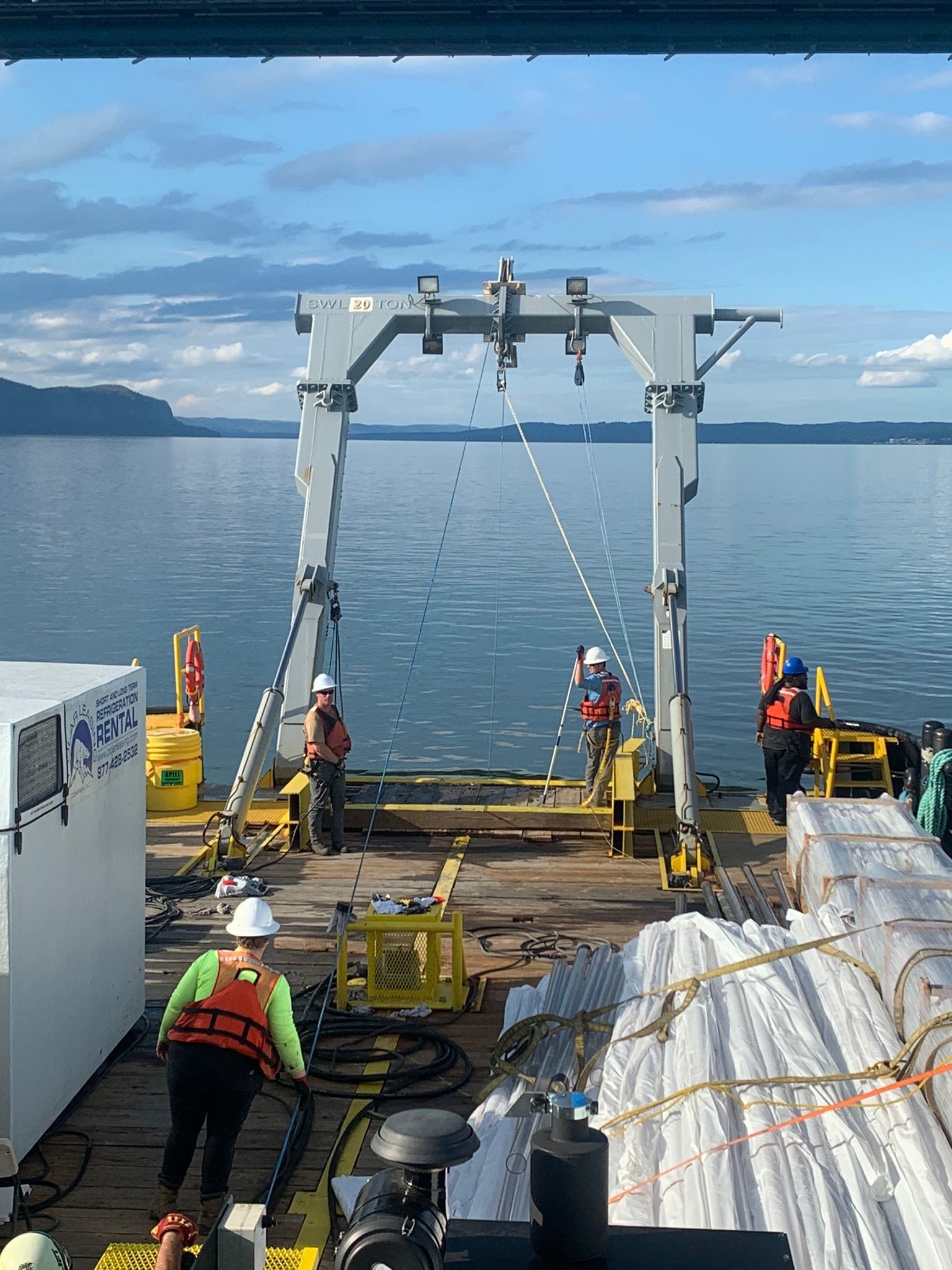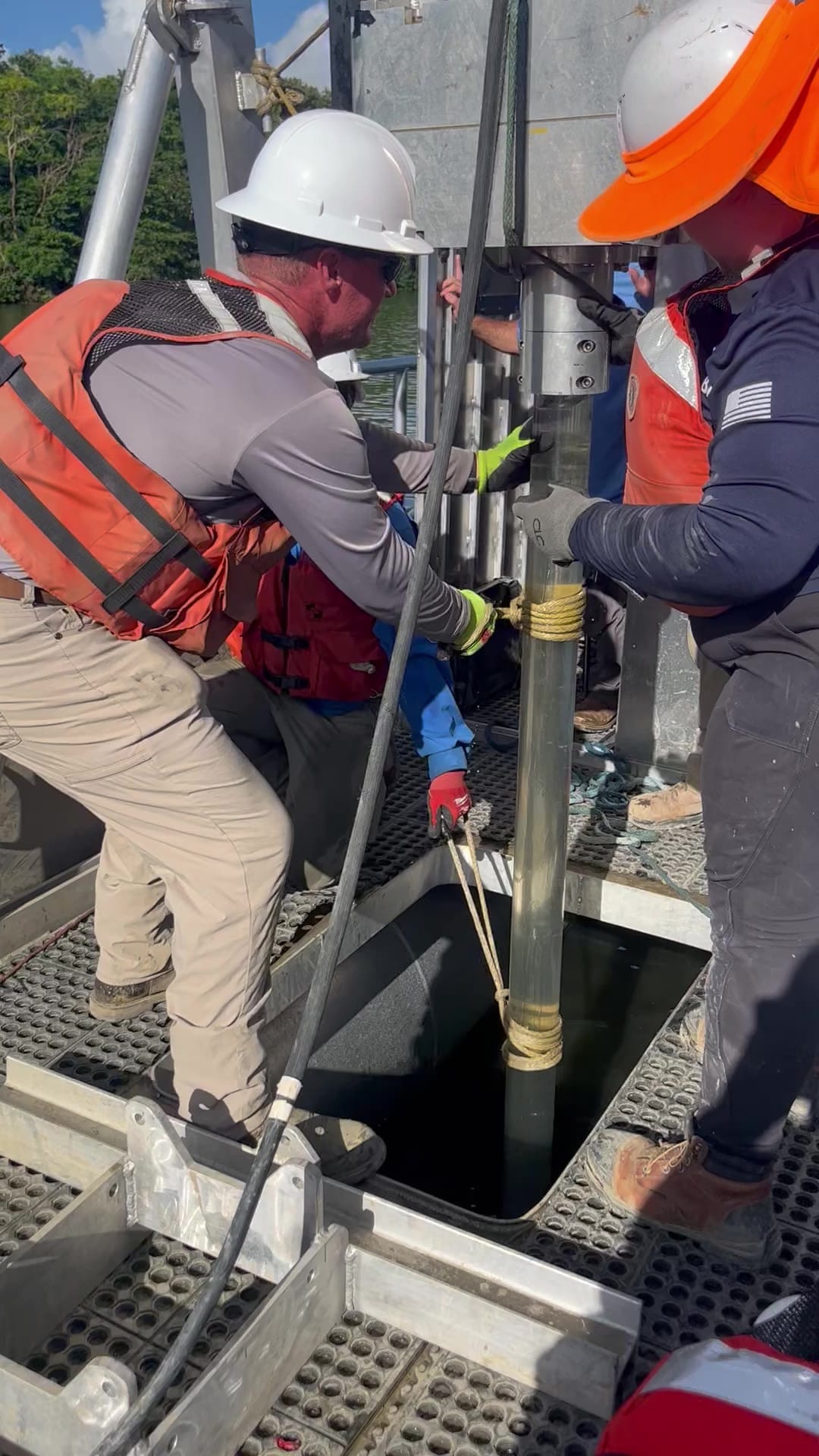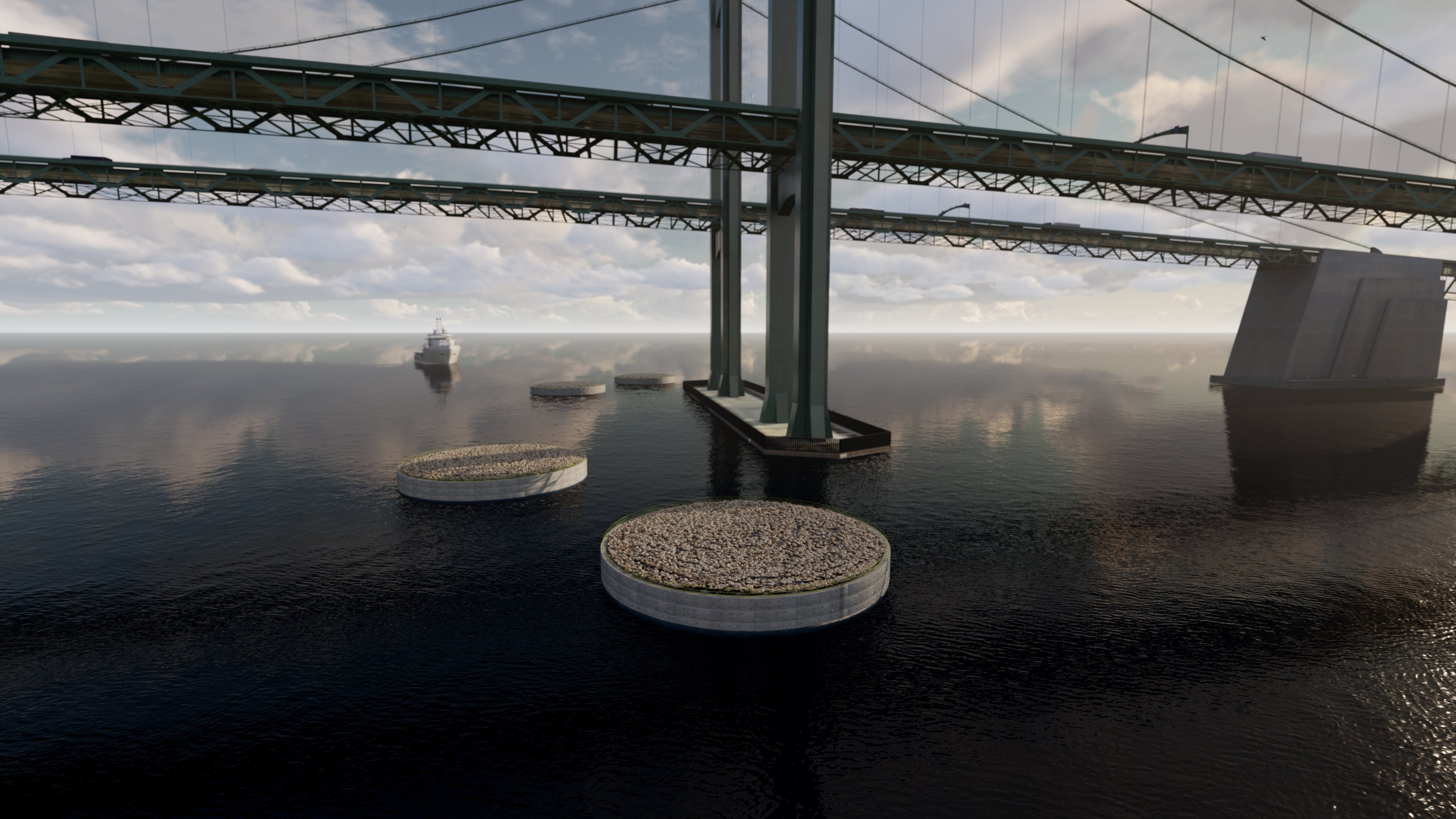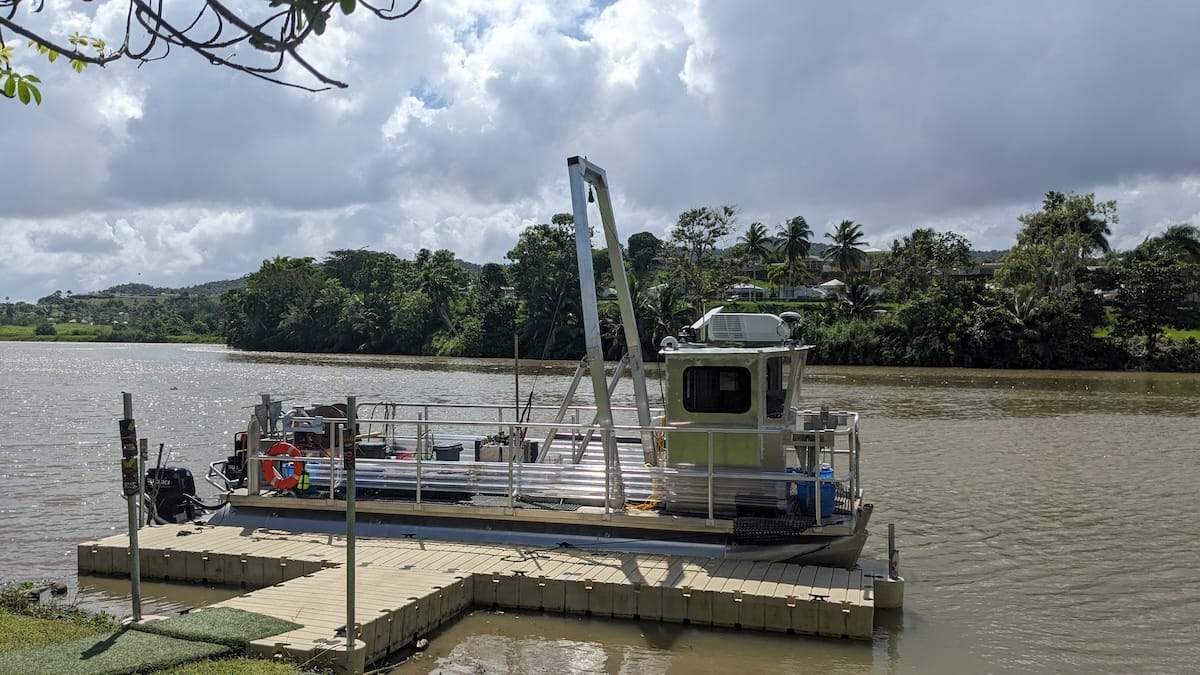
In-House Geotechnical Investigations
Does your project require site specific geologic, benthic, or geotechnical information to aid in habitat identification, seabed composition, ground modeling, excavation, or permitted bottom disturbance?
Our In-House Geotechnical Investigation Services
Our diverse geosciences team includes geologists, geotechnical engineers, geophysicists, hydrographers, licensed PGs, licensed PEs and RPLS surveyors to collect and analyze geotechnical data.
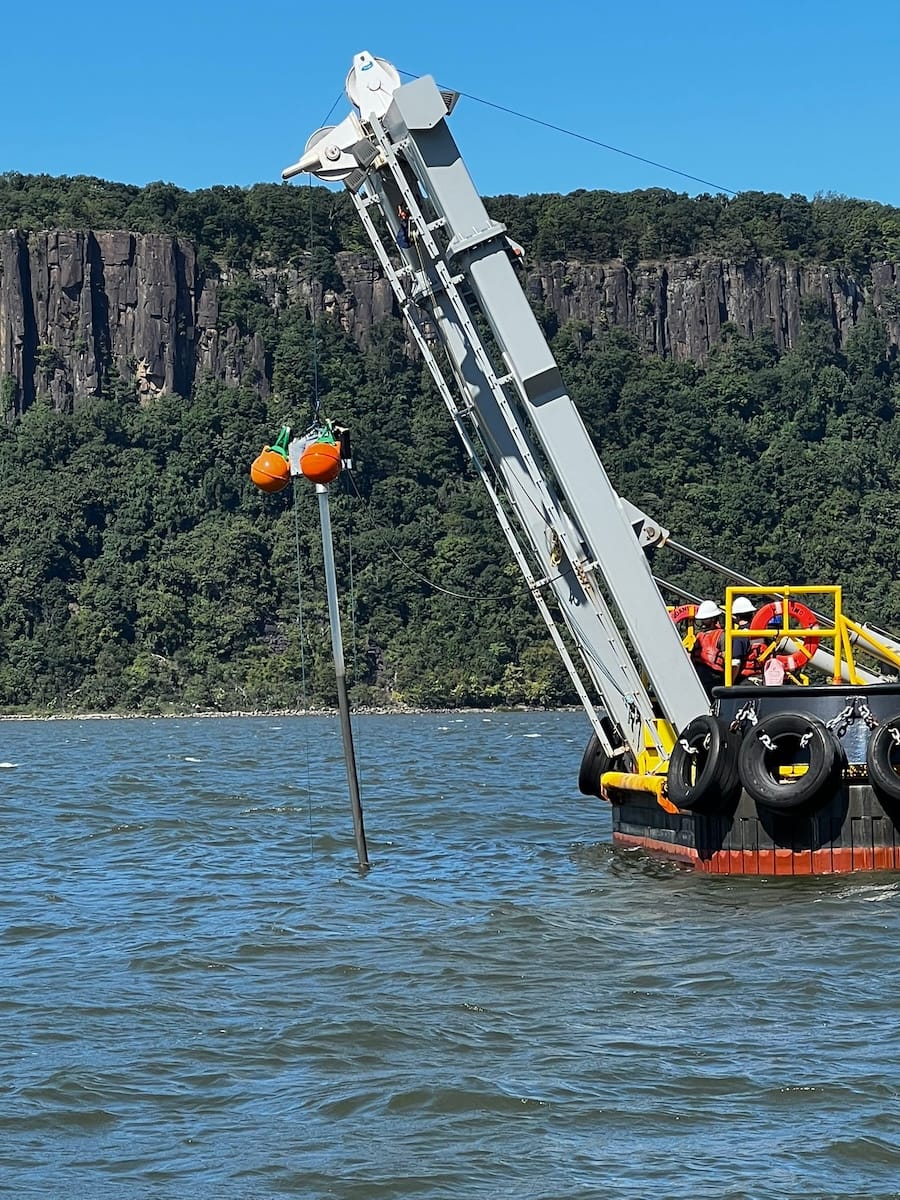
Our Geotechnical Services Include:
- Vibracoring – The geologic information below the seabed is just as important as the seabed itself. We can collect vibracores up to 6m that can be shipped ashore for further geotechnical, geologic and ecological assessments and analyses. The geologic information gained by the vibracore can also further the analytical value of sub-bottom reflection data within the upper 6m of sediment to refine volume calculations for dredge removal, sand resource estimations, and excavation planning.
- Core Drilling – For deeper investigations, we offer collaboration with our partners to provide drilled cores up to ~50m below the surface. These cores can provide shallow geotechnical and environmental information similar to vibracores as well as information deep enough for many foundational design projects. We work with experienced drilling companies to conduct Standard Penetration Test (SPT) borings; probes (geoprobes, jet, rock); rock cores and push/hammer cores. This data can be easily combined with deeper reflection seismic data to provide more accurate paleo-landscape reconstructions, and ground model creations.
- Box Coring – When a larger volume of seabed composition is needed, a box core can be used to collect sufficient data for benthic analysis, biologic assessments, and habitat assessments as well as basic grain size and mineral composition of the sediment.
- Seabed Classification Assessment – Regulatory agencies often require the classification of the seabed regarding sediment grain size (ASTM) or ecological consequence (CMECS), among others. Our dedicated team can provide data of sufficient density and analytical depth to properly classify seabed areas based on these regulatory and analytical schemes.
- Soil Laboratory Analysis – We offer USACE Certified laboratory soil testing through our partner firm Gahagan & Bryant Associates, Inc. (GBA). Our geologists provide core logging and photographic documentation, as well as laboratory tests in accordance with ASTM standards including visual description, Munsell color assessment, grain size analysis, carbonate content, and organic content.
- Seabed Grab Sampling – Physically sampling the composition of the seabed at specific locations is used for a variety of analytical purposes including:
- Ground truthing side scan sonar and multibeam backscatter data to understand what the colors of the mosaics represent in terms of ground type;
- Randomly sampling the bottom to understand grain size, shell, infauna, and mineralogy of the seabed; and
- Other engineering, ecological, and geological considerations.
It is always a pleasure to work with professions like ST Hudson, which consists of such talent from professionally qualified people. There are no words to express how much I appreciate their efforts.
South Jersey Port Corporation -
See Our Experience
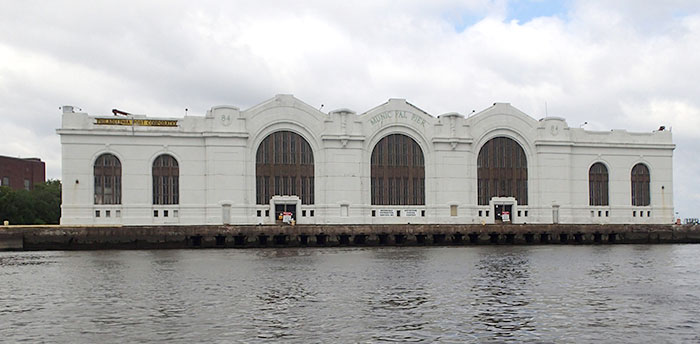
Philadelphia Regional Port Authority
Pier 80 and 82 Hardware Repairs | Pier 82 and 84 Pile Repairs
Learn more +

Energy Transfer Marcus Hook Industrial Complex
Addition of a New Fire Water Intake System
Learn more +
Pro Tips
The construction management consultant should be available to be on-site for all crucial project events. This individual should participate in weekly progress meetings and receive construction schedule updates, as well as notifications on deliveries of major materials and components.
Ideally, the construction support consultant should be brought in during the bidding phase to provide technical feedback on the contractor’s approach to the project and provide value engineering options. The construction support firm should be hired no later than immediately after award of the project.
